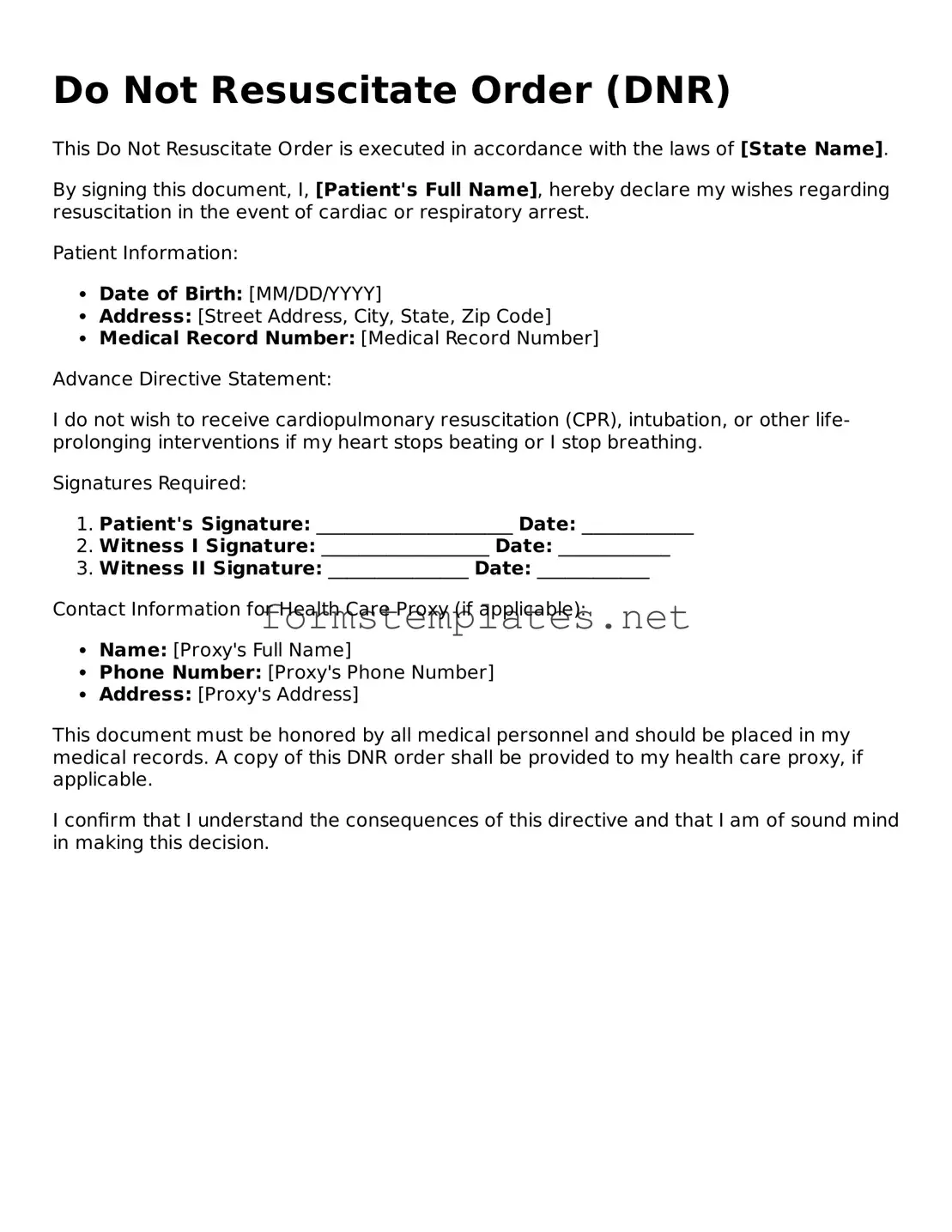What is a Do Not Resuscitate (DNR) Order?
A Do Not Resuscitate Order is a legal document that allows a person to refuse resuscitation efforts in the event of a cardiac arrest or respiratory failure. This order indicates that if the heart stops beating or breathing ceases, medical personnel should not perform CPR or other life-saving measures.
Who can request a DNR Order?
Typically, a DNR Order can be requested by an individual who is of sound mind and understands the implications of the order. In some cases, a legally authorized representative, such as a healthcare proxy or power of attorney, may also request a DNR on behalf of someone who is unable to make decisions.
How is a DNR Order created?
To create a DNR Order, the individual must complete the appropriate form, which is often provided by healthcare facilities or state health departments. This form usually requires signatures from the individual and their physician. It is important to ensure that the form complies with state laws.
Where should a DNR Order be kept?
A DNR Order should be kept in a place that is easily accessible to medical personnel. Common locations include:
-
On the refrigerator door
-
In a medical file or binder
-
With a healthcare proxy or family member
Is a DNR Order valid in all healthcare settings?
Generally, a DNR Order is valid in most healthcare settings, including hospitals, nursing homes, and emergency medical services. However, it is advisable to confirm its acceptance with specific facilities, as policies may vary.
Can a DNR Order be revoked?
Yes, a DNR Order can be revoked at any time. The individual must communicate their decision to revoke the order, and it is recommended to destroy any copies of the original document to prevent confusion.
What happens if a DNR Order is not in place?
If a DNR Order is not in place and a person experiences cardiac arrest or respiratory failure, medical personnel are required to perform life-saving measures, such as CPR or intubation, regardless of the individual's wishes.
Can a DNR Order be part of an advance directive?
Yes, a DNR Order can be included in an advance directive. An advance directive is a broader legal document that outlines a person's healthcare preferences in various situations, including end-of-life care. It is advisable to consult with a legal professional when creating an advance directive.
How can family members support someone with a DNR Order?
Family members can support someone with a DNR Order by:
-
Understanding the individual's wishes and discussing them openly.
-
Ensuring that the DNR Order is accessible and properly documented.
-
Advocating for the individual's choices with healthcare providers.
